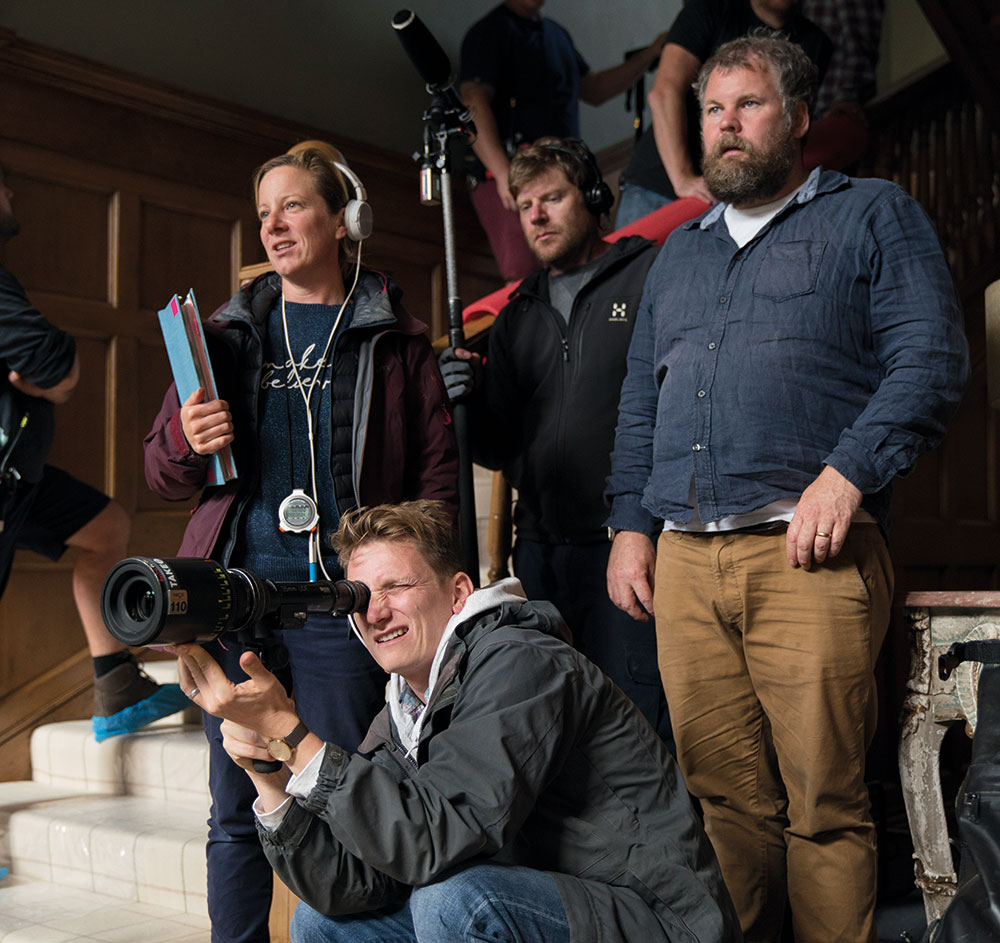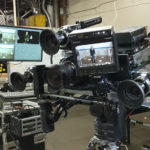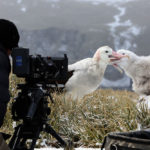
Born to be Wild
Posted on Jun 20, 2019 by Julian Mitchell
We speak to director Tom Harper and colourist Simone Grattarola about the making of Wild Rose, a new country music drama starring Jessie Buckley and Julie Walters
 The wild rose herself, actress Jessie Buckley playing Rose-Lynn Harlan
The wild rose herself, actress Jessie Buckley playing Rose-Lynn Harlan
Words Saffron Osborn / Pictures BFI Film Fund
If the 2019 Oscars offer evidence of a rising trend, it’s one involving features with musical motifs. They’re no longer simply just blockbusters aimed at entertainment: they now have the capacity to regularly break records, too.
Winner of four Academy Awards, Bohemian Rhapsody has made history as the highest-grossing music biopic ever made, while A Star is Born features a soundtrack that rose to number one on the Billboard 200 – and won Lady Gaga her first Academy Award statuette.
Then there’s Wild Rose – a new indie feature that promises to capitalise on the ever-growing hunger for music-inspired drama, while simultaneously delivering several completely unexpected twists to the traditional rising-star narrative audiences might have come to expect.
Directed by Tom Harper and graded by Time Based Arts’ Simone Grattarola, with cinematography by George Steel, the film tells the story of Rose-Lynn Harlan, a brazen talent from Glasgow whose dream is to go to Nashville to become a country music star. Her personal problems, however, have the potential to get in the way. The film begins right after Rose-Lynn’s release from prison, where she’s served a year-long sentence on drug offences.
Definition spoke to Harper and Grattarola – who graded the feature in Blackmagic Design’s DaVinci Resolve – about how they ensured an unsympathetic heroine was nonetheless also relatable.
 DOP George Steel setting up a shot
DOP George Steel setting up a shot
Definition: How did you first become involved in Wild Rose?
Tom Harper: I initially heard about it ten years ago, when the film’s scriptwriter, Nicole Taylor, began working on it. It wasn’t until about a year before we started shooting, though, that I read the script after going for a cup of tea with producer Faye Ward. She was just starting to get the project off the ground, and as soon as I read the script, I fell in love with it. I knew I had to get Jessie Buckley on board. We worked together on BBC’s War & Peace and, as both a singer and an actress, I knew the lead role was perfect for her immediately.
Def: What were your main aims going into the film?
Simone Grattarola: The principal aim was to make Rose-Lynn enough of a rebel, while making sure the audience still empathised with her. The look and feel of the film was delicate in this manner as well. We never wanted to go too far into bleakness; we wanted her world to be vibrant. We needed to provide hope.
TH: What appealed to me most about the script is that it felt like an honest portrayal of this young woman who has two conflicting sides to her: one who dreams of becoming a singer, and the other who is a mother and has a responsibility to her children. The two sides need each other and, despite being seemingly separate, they are both firmly intertwined. Enhancing that concept and translating it into film was our main aim, and informed every decision we made from a directorial perspective. From a photographic point of view, too, everything always went back to how we could honestly depict this woman and her struggles. For example, one of the most prominent elements to portraying her story honestly was to make sure we had the right locations. The story takes place in Glasgow, so we didn’t just build a set to look like the city. We filmed in the actual estates the script depicted, to give Wild Rose a proper texture and authenticity.

Def: It’s not very often a Glaswegian council estate doubles as a film set! Can you tell us more?
TH: For Wild Rose, we needed the authenticity only a real location could give us above all else. Being on set meant we had the perfect lighting and environments right off the bat, and the actors were able to respond directly to their surroundings both in Glasgow and when we took the film to Nashville. Being on set also really helped with improvisation. For example, there was one location that just wasn’t quite right, so George and I went for a walk around the block and found somewhere else. The scene just expanded with us.

Def: Was the grading process also informed by this shooting style?
SG: As ever with Tom and George, we took some time upfront to test grades and create the palette for key scenes during the editorial stage. Rather than it being a ‘look’ grade, it was much more about ‘feeling’, so there were no predefined LUTs. Instead, we discussed how the grade could reflect how the characters were feeling and spent time developing ideas in DaVinci Resolve. There were even a few two-to-one votes where we all had different opinions on the matter! Ultimately, we knew we definitely didn’t want Glasgow to have a glossy, modern look – full of big rooms and brightly saturated. Instead, we wanted the scenes shot there to look a bit grittier and noisier, with grain added.
TH: We also ensured there was a difference in the grade between Glasgow and Nashville, to reflect the natural variations in light and colour we saw in the rushes from the two locations. Rose-Lynn is achieving a lifelong dream by performing in America, so we used Resolve’s grading toolset to create a more extreme look that was more colourful and contrasted, down to there being more blue in the blacks. We then delivered P3 for DCP cinema delivery and Rec. 709 for broadcast and DVD.
 DOP George Steel with the director, Tom Harper
DOP George Steel with the director, Tom Harper
Def: What main lessons did you learn throughout the making of Wild Rose?
TH: How to be responsive and adapt our shooting style to incorporate musical performances. All the music was recorded live. We could have recorded it in the studio first, but doing it separately for a movie where music is such an intrinsic part of the story felt alien and wrong. Again, it fed back into that core principle of making it as truthful and authentic as possible. We had to shoot in a way where we were always on our feet, ready to light on the fly if Jessie decided to take the action somewhere else during her performance. We wanted to give the actors space and freedom to do their best work, and genuinely have that blur between where film stopped and reality started. George knew if the action went somewhere else, he was free to follow that action. The sound team knew that, too – sometimes they just had to pick up their boom and run.
Def: Do you have any favourite scenes or sequences from when you were making the film?
TH: My favourite scene was a great concert sequence with a crowd in Glasgow. All the extras were absolutely fantastic, and Jessie gave a great performance where she ended up leaping off the stage and writhing around on the floor – the focus puller wasn’t expecting it at all, so he was flying off trying to get a better look. In that chaos, that’s where the magic happens. That, for me, is why we all do what we do. Because when it kicks off, you’re all prepared and ready to respond and capture that. This wasn’t acting: it was an authentic gig.







